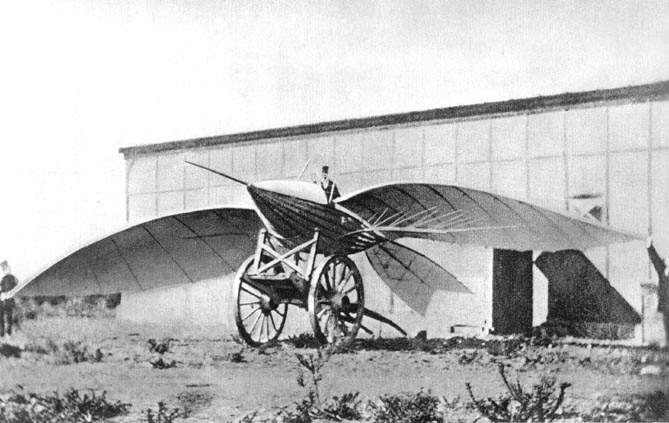Early flying machines include all forms of aircraft studied or constructed before the development of the modern aeroplane by 1910. The story of modern flight begins more than a century before the first successful manned aeroplane, and the earliest aircraft thousands of years before.
The history of early powered flight is very much the history of early engine construction. The Wrights designed their own engines. They used a single flight engine, a 12 horsepower water-cooled four-cylinder inline type with five main bearings and fuel injection. Whitehead’s craft was powered by two engines of his design: a ground engine of 10 horsepower which drove the front wheels in an effort to reach takeoff speed and a 20 horsepower acetylene engine powering the propellers. Whitehead was an experienced machinist, and he is reported to have raised funds for his aircraft by making and selling engines to other aviators. Most early engines were neither powerful nor reliable enough for practical use, and the development of improved engines went hand-in-hand with improvements in the airframes themselves.

In Europe, Léon Levavasseur’s Antoinette 8V pioneering example of the V-8 engine format, first patented in 1902, dominated flight for several years after it was introduced in 1906, powering many notable craft of that era. Incorporating direct fuel injection, evaporative water cooling and other advanced features, it generated around 50 horsepower .
The British Green C.4 of 1908 followed the Wright’s pattern of a four-cylinder inline water-cooled design but produced 52 horsepower. It powered many successful pioneer aircraft including those of A.V. Roe.
Horizontally opposed designs were also produced. The four-cylinder water-cooled de Havilland Iris achieved 45 hp but was little used, while the successful two-cylinder Nieuport design achieved 28 hp in 1910.
1909 saw radial engine forms rise to significance. The Anzani 3-cylinder semi-radial or fan engine of 1909 (also built in a true, 120° cylinder angle radial form) developed only 25 horsepower but was much lighter than the Antoinette, and was chosen by Louis Blériot for his cross-Channel flight. More radical was the Seguin brothers’ series of Gnôme rotary radial engines, starring with the Gnome Omega 50 hp air-cooled seven-cylinder rotary engine in 1906. In a rotary engine, the crankshaft is fixed to the airframe and the whole engine casing and cylinders rotate with the propeller. Although this type had been introduced as long ago as 1887 by Lawrence Hargrave, improvements made to the Gnome created a robust, relatively reliable and lightweight design which revolutionised aviation and would see continuous development over the next ten years. Fuel was introduced into each cylinder direct from the crankcase meaning that only an exhaust valve was required. The larger and more powerful nine-cylinder, 80 horsepower Le Rhône 9C rotary was introduced in 1913 and was widely adopted for military use.
Inline and vee types remained popular, with the German company Mercedes producing a series of water-cooled six-cylinder models. In 1913, they introduced the highly successful 101 hp D.I series.
